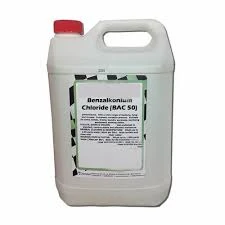Strategies for Preventing Corrosion and Scale in Industrial Systems and Equipment
Corrosion and Scale Inhibitors Protecting Infrastructure in Industrial Applications
Corrosion and scale accumulation are two significant problems faced by various industries, including oil and gas, power generation, and water treatment. Both phenomena can lead to considerable operational costs due to equipment failures, reduced efficiency, and increased maintenance efforts. To mitigate these issues, the use of corrosion and scale inhibitors has become a standard practice in maintaining the integrity and efficiency of industrial systems.
Understanding Corrosion and Scale Formation
Corrosion is the gradual degradation of materials, primarily metals, caused by chemical reactions with their environment. Factors influencing corrosion include the type of material, environmental conditions (such as humidity and temperature), and the presence of corrosive agents like salts and acids. The consequences of corrosion can be dire, leading to structural failures, leaks, and safety hazards.
Scale, on the other hand, is the buildup of mineral deposits, commonly found in water systems, due to the precipitation of dissolved minerals like calcium and magnesium. This buildup can insulate heat exchangers and pipes, resulting in decreased thermal efficiency and increased energy expenditure. Together, corrosion and scale can compromise system performance and reliability, prompting the need for effective inhibition measures.
The Role of Inhibitors
Corrosion and scale inhibitors are chemical compounds added to industrial fluid systems to prevent or reduce the detrimental effects of these issues. These inhibitors work through various mechanisms, such as forming protective films on metal surfaces, altering the solubility of scaling minerals, or neutralizing acidic conditions that lead to corrosion.
Types of Corrosion Inhibitors
There are several types of corrosion inhibitors, categorized based on their chemical nature and mechanism of action
1. Anodic Inhibitors These react with the anode (the site of oxidation) to form a protective film, slowing down the oxidation process.
corrosion & scale inhibitors

2. Cathodic Inhibitors These primarily modify the cathodic reaction, thus reducing the rate of corrosion.
.
3. Mixed Inhibitors These function at both anodic and cathodic sites, providing comprehensive protection against corrosion.
4. Organic Inhibitors Typically derived from organic compounds, these are effective at low concentrations and can form strong protective films on metal surfaces, particularly in acidic environments.
Types of Scale Inhibitors
Scale inhibitors act by interfering with the crystallization process of minerals, preventing them from forming solid deposits. Common types of scale inhibitors include
1. Threshold Inhibitors These work at very low concentrations, disrupting the crystal growth process.
2. Polymeric Inhibitors These large molecules encapsulate scale crystals, preventing their adherence to surfaces.
3. Phosphonates These organic compounds effectively chelate metal ions, keeping them in a soluble form and reducing scale formation.
Conclusion
The use of corrosion and scale inhibitors is vital in protecting industrial systems from the detrimental impacts of metal degradation and mineral buildup. By implementing these inhibitors, industries can enhance the longevity and efficiency of their operations, ultimately resulting in substantial cost savings and improved safety. As technology continues to advance, the development of more effective and environmentally friendly inhibitors will play a critical role in sustainable industrial practices. Thus, investing in corrosion and scale control strategies is not merely an operational necessity but also a commitment to protecting infrastructure and the environment.
-
LK-319 Special Scale And Corrosion Inhibitor For Steel Plants: Advanced Solutions for Industrial Water SystemsNewsAug.22,2025
-
Flocculant Water Treatment: Essential Chemical Solutions for Purification ProcessesNewsAug.22,2025
-
Isothiazolinones: Versatile Microbial Control Agents for Industrial and Consumer ApplicationsNewsAug.22,2025
-
Scale Inhibitor: Key Solutions for Water System Scale PreventionNewsAug.22,2025
-
Organophosphonates: Versatile Scale Inhibitors for Industrial Water SystemsNewsAug.22,2025
-
Scale and Corrosion Inhibitor: Essential Chemical Solutions for Water System MaintenanceNewsAug.22,2025





